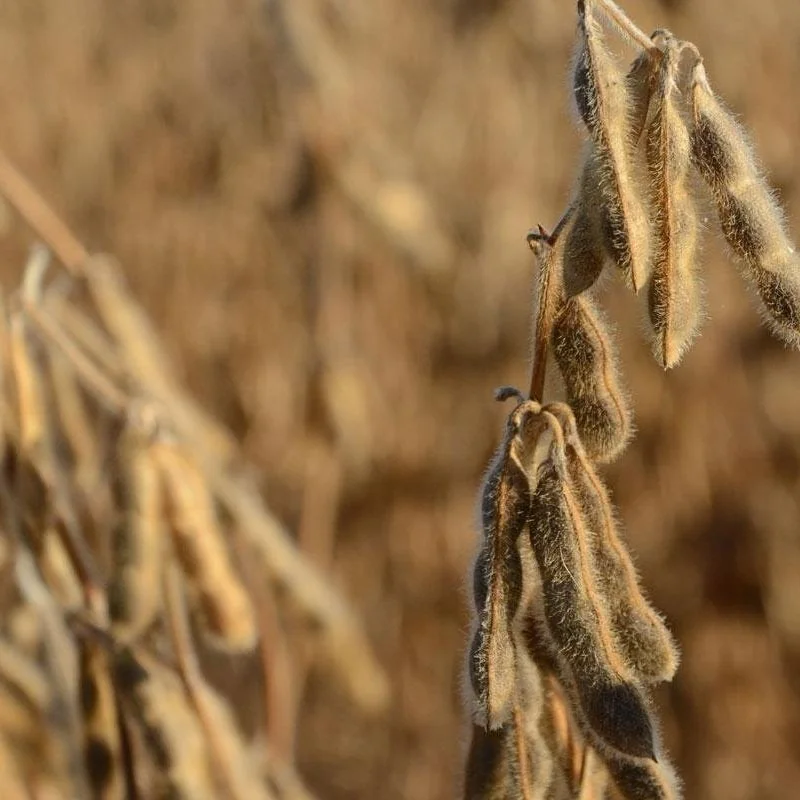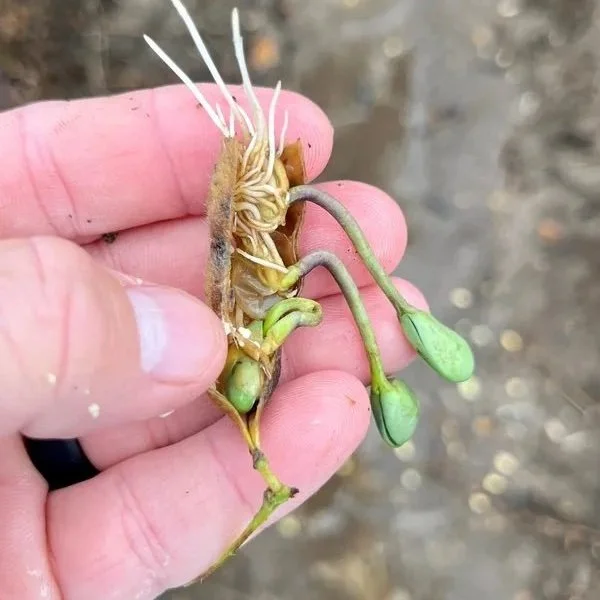Weather Well: Variety Screening To Protect Soybean Harvest Quality
As soybean plants reach maturity, the membrane that connects each seed to the pod starts to detach, an early step in the plant dying and drying out for harvest. After this point, the soybean seeds no longer have access to the plant’s resources.
“The plants no longer protect the drying soybean seeds, making them vulnerable to weather events,” explains David Moseley, state soybean specialist for the Louisiana State University AgCenter. “Too much rain after soybeans start drying down can cause the seeds to turn brown, reducing quality.”
Read More
2023 Louisiana Soybean Production Update: An Early Start To Planting And A Freeze
The USDA-NASS survey reported that two percent of the Louisiana soybean crop was planted by March 19, 2023. The warm and dry weather during early March allowed producers to plant their corn crop early and then begin planting soybean. Unfortunately, on March 20th, the temperature dropped to approximately 28 degrees Fahrenheit in Northeast Louisiana. Soybean tissue death can occur if the temperature falls to 28 degrees Fahrenheit for more than four hours, especially if the unifoliate leaves are exposed (Vann and Stokes, 2020).
Read More
Trials Affirm Best Management Practices in Louisiana
Every soybean variety offers a combination of yield potential and defensive traits. Farmers combine that information with performance data to select the best varieties for their fields. Then, throughout the season, they manage factors they can control to maximize yield and profit.
In Louisiana, much of the performance data and management recommendations come from variety trials managed by David Moseley, state soybean specialist for the Louisiana State University AgCenter.
Read More
Argentina's Loss May Be U.S. Farmer's Gain
For those who have slept since then, back in September USDA was estimating Argentina’s 22-23 corn crop at a record 55.0 million metric tonnes, up 2 MMT from the prior year. Soybean production was pegged at 7 MMT greater, at 51.0 million.
Now all that has changed.
Read More
LSU AgCenter Scientist Part Of Award Winning Nematode Management Coalition
As a nematologist with the LSU AgCenter, Tristan Watson is accustomed to his work earning the recognition of scientific organizations. Now he can add a public relations accolade to his résumé, too.
Read More
American Soybean Association Call for Sufficient Farm Bill Budget Resources
The American Soybean Association submitted a letter to the U.S. Senate and House of Representatives calling for sufficient Farm Bill budget resources.
Read More
Evaluating Soybean Planting Dates In Louisiana
Recent data suggest the optimum planting timing for soybean in central and north Louisiana is between late-March to mid-April.
The LSU AgCenter continues to research soybean planting dates to see if it is economical to plant earlier or later than the optimum time.
Read More
How Bad Are The Crops In Argentina?
Bad news follows bad news. Unfortunately, this is what the weather has been doing to Argentina’s agriculture during the 2022/2023 crop year.
After being affected by La Niña for the third year in a row, key producing regions in the country are facing one of the worst droughts of the last four decades. Corn and soybean production is likely to be highly impacted by above-average temperatures and much below-average precipitation in 2023.
Read More
Louisiana Soybean Parish Estimates: February 2023
The Louisiana Soybean Parish Estimates report contains the results from the 2022 December Agricultural and Row Crops County Agricultural Production surveys. Thanks to all who responded to these surveys.
Read More
Market for Meal: Morocco Holds Promise As A Key Buyer for U.S. Soybean Products
The soybean processing industry is expanding in the U.S. due to the push for green fuels, such as renewable diesel and sustainable aviation fuel made from soybean oil. The result of that increased crush will be an excess of soybean meal.
Read More
New Soybean Factsheets Published
There are two new soybean factsheets published on the Soybean Research and Information Network (SRIN). These factsheets were written by a national group of soybean agronomists.
Read More
USDA Declares Disaster in Five More La. Parishes
U.S. Secretary of Agriculture Tom Vilsack issued secretarial disaster declarations for an additional five Louisiana parishes due to excessive rains. Those parishes are Bossier, Caddo, Grant, Rapides and West Carroll.
Read More
Brazil's Soybean Crop Estimated To Be 18% Over Prior Year
The AgResource team has been on the ground in Mato Grosso, Brazil this past week. Here's a summary of their findings from the soybean rows.
A large Brazilian soybean crop will be harvested in the next 30 to 45 days, and most likely USDA, CONAB (the National Supply Company, a public company under the Ministry of Agriculture, Livestock and Food Supply in Brazil) and private analysts will be forced to raise Brazilian soybean production estimates by 1 million to 3 million tons (37 million to 110 million bushels). A crop of at least 150 million tons versus 129.5 million last year is guaranteed.
Read More
Research Identifies $400 Million in Unrealized Soybean Value
In some instances, two heads are better than one. For a new multi-regional research effort, five organizations put their heads together to achieve full genetic yield potential of the soybean. A new partnership, the first of its kind in more than 40 years, aims to increase soybean flower and pod retention. This unrealized value could bring $50 per acre or $400 million in economic return for U.S. soybean farmers.
Read More
LSU Research Discovers New Option For cleaning Spray Tanks
Herbicide-tolerant soybeans expand weed control options to include dicamba, 2,4-D and more. Yet many soybean varieties are still sensitive to herbicides that other varieties have been bred to tolerate. That means herbicide residue left in spray tanks and booms from a previous application can damage crops much like herbicide drift.
A new potential cleaning solution may be available from an unlikely source.
“While researching medicinal plants, I discovered natural ingredients that can solubilize a wide range of substances, or force oil and water to mix,” says Zhijun Liu, professor in the School of Renewable Natural Resources at Louisiana State University.
Read More















